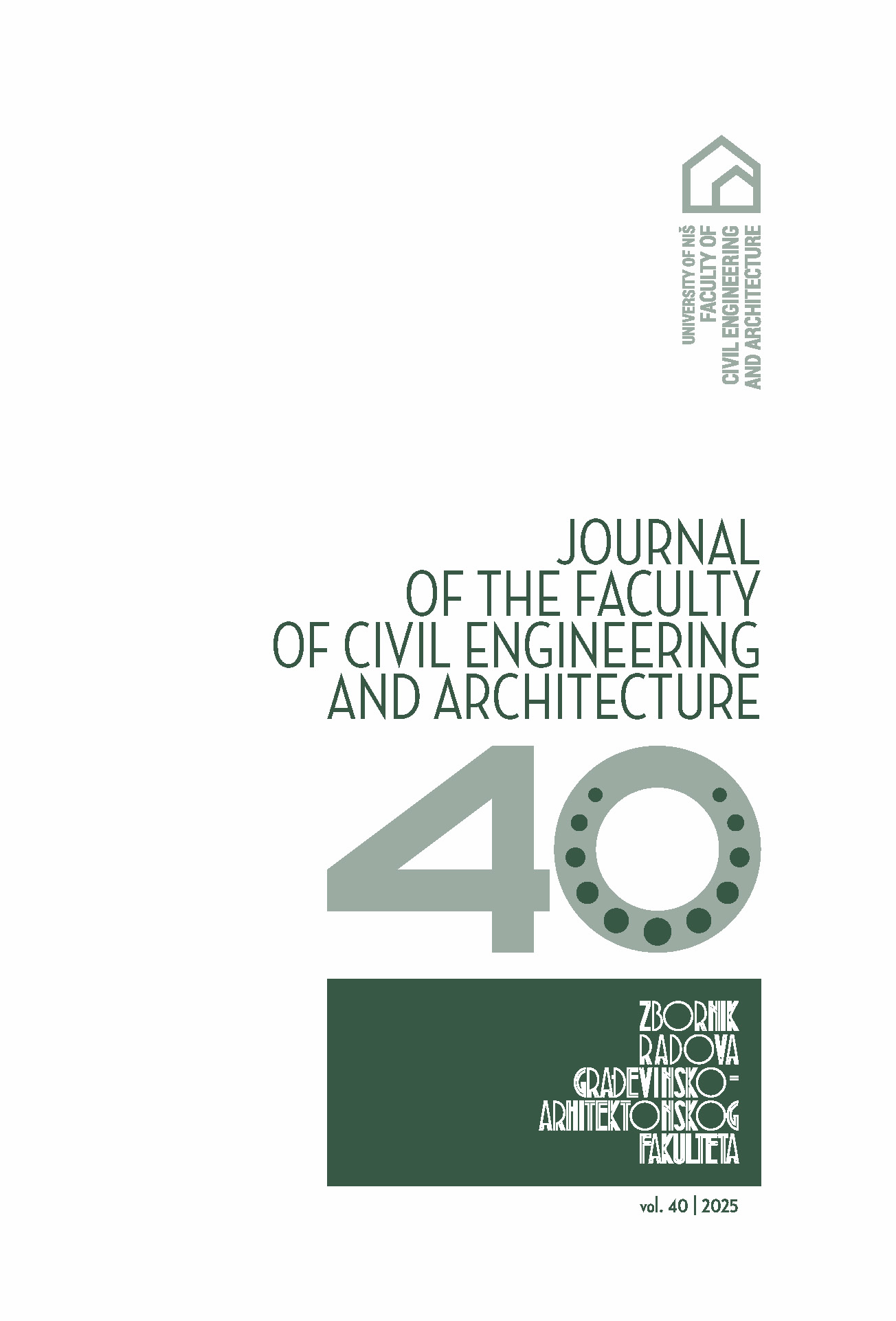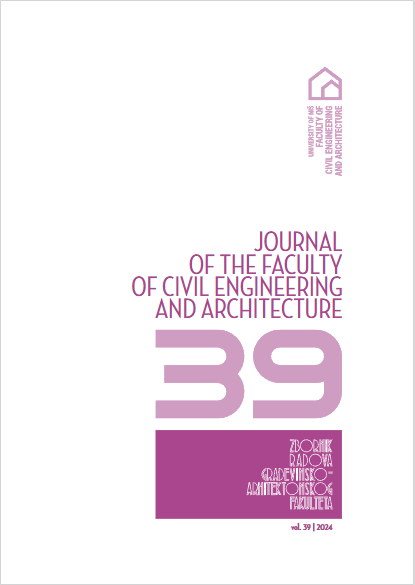CHALLENGES AND OPPORTUNITIES IN THE REDEVELOPMENT OF PUBLIC OPEN SPACE WITHIN MULTI-FAMILY HOUSING ESTATES IN POST-SOCIALIST CZECH REPUBLIC
This research explores the evolution of public open spaces (POS) in large housing estates (LHE) within the post-socialist context, using the Czech Republic as example. The study investigates the challenges and opportunities associated with the redevelopment of POS, considering the impacts of privatization, socio-economic transformations, and urban ...
By Mihailo Mitković, Milica Igic
ANALYSIS OF SURFACE DEFORMATIONS DURING EXCAVATION OF A SMALL OVERBURDEN TUNNEL IN WEAK ROCK MASSES
Excavation of tunnels with a small overburden inevitably implies surface settlements, especially when they are carried out in soft soil or weak rock masses. Subsidence becomes a critical aspect when the construction of tunnels is realized in narrower urban areas, directly below occupied residential buildings. Taking as an example the Kobilja Glava ...
By Ekrem Bektašević, Satko Filipović, Kemal Gutić, Džemal Hodžić, Namik Musa
PROBABILISTIC ESTIMATION OF LIFE-CYCLE CHLORIDE-INDUCED CORROSION
Coastal bridges constitute critical components for the transportation in offshore areas, and thus their serviceability and safety against hazard such as earthquakes need to be ensured in a life-cycle perspective. However, coastal bridges are confronted with significant corrosion that results in degradation effects mainly on concrete piers. This can...
By Jiabin Liu, Heng Mei, Andrija Zorić
CONCEPTUAL URBANISTIC-ARCHITECTURAL MODEL OF ROMANI HOUSING: CASE STUDY CRVENA ZVEZDA SETTLEMENT IN NIŠ
In Serbia, Roma people face various challenges, primarily expressed through discrimination in many fields, as well as difficulties in education, healthcare, and employment. The majority of Roma people in Serbia live in very poor housing conditions. Romani settlements are generally characterized by overcrowded areas, inadequate infrastructure, unpla...
By Hristina Krstić, Mirko Stanimirović, Nataša Petković, Vladana Stanković
LANDSCAPE PAINTED WITH TEA: ARCHITECTURAL COLONY IN KLINCI VILLAGE (LUSTICA)
This paper reflects on the outcomes and implications of an architectural colony conducted in the village of Klinci, Montenegro. The colony aimed to address rural development challenges through innovative architectural solutions while fostering collaboration among students, professionals, and local stakeholders. Drawing upon the experiences and disc...
By Mirko Stanimirović
DEVELOPMENT AND APPLICATION OF ENVIRONMENTAL PARAMETERS AND BIOCLIMATIC PRINCIPLES IN THE ARCHITECTURAL DESIGN OF BUILDINGS
In modern conditions of consumption of natural, primarily energy resources, and environmental pollution, buildings are ranked among the biggest consumers and polluters, and that at the world level. The paper provides an overview of contemporarytrends, as well as challenges regarding the use of created and available natural resources, by determining...
By Marija Mihajlović, Emily Trummer
ASSESSMENT OF PROTECTIVE STRUCTURES FOR ARCHITECTURAL HERITAGE: CASE STUDY OF POMPEII, LEPENSKI VIR AND GOBEKLI TEPE
The protection of archaeological sites is crucial for preserving their authenticity and historical significance. This study evaluates the effectiveness of protective structures implemented at three different sites: Villa dei Misteri in Pompeii, Lepenski Vir in Serbia, and GT1 Göbekli Tepe in Turkey. Our focus extends to iconic landmarks where ...
By Nastasija Kocić, Sonja Krasić, Jovana Tomić, Isidora Mitrović
INFLUENCE OF VEHICLE SPEED IN FREE TRAFFIC FLOW ON DISTRIBUTION OF ROADWAY SUPERELEVATION
In this paper, the theoretical concept of roadway superelevation based on speed in free traffic flow is derived. The influence of the radius of the horizontal curve on speed in free traffic flow as a basis of this analysis is taken from a more detailed experimental research for two-lane rural highways. This method is new and differs from others tha...
By Dušan Cvetković, Jelena Dimitrijević, Nemanja Marinković, Nikola Romić
BANJA LUKA URBAN AXIS AS THE ARCHITECTURAL RECORD OF HISTORICAL DEVELOPMENT
The paper reviews the connection of the historical timeline and principal stages of development, on the one hand, and the urban axis – the main street in Banja Luka, on the other, as a very accurate historical record of urban development. The urban development axis in Banja Luka is a vast resource in terms of architectural layers that chronic...
By Miroslav Malinović
DESIGN OF RC STRUCTURES OF MEDIUM-RISE APARTMENT COMPLEX ON SIGNIFICANTLY SLOPED TERRAIN IN MONTENEGRO
Design of structures in medium or extremely sloped terrains is a demanding and challenging engineering task. Depending on the depth of foundations of the future buildings, different methods of securing foundation pit sides are used. Extremely high vertical excavations cannot utilize the standard methods of securing ground stability (use of “L...
By Nemanja Marković, Nikola Velimirović, Nenad Stojković






